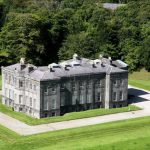
On our trip around Ireland, we will be visiting several “stately homes,” what the Irish call “Big Houses.” This term refers to the divided nature of life in previous centuries when the Anglo-Irish Protestant aristocracy owned the land and the mansions and castles on it, and the “mere Irish” (a common derogatory term used by the Anglo-Norman invaders) lived as small tenant farmers on land that had been confiscated from their ancestors at various stages of England’s colonization of the island.
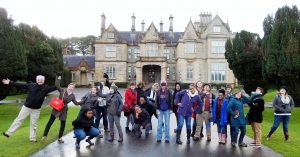
As you might imagine, a contentious history surrounds many of these houses, not to mention the ones that were burned down by rebel forces during the independence movement and subsequent civil war in the first quarter of the twentieth century. As a result, there’s no money, no tradition of preservation, no National Trust as in the UK to tend to the rich history and traditions of these magnificent edifices. Where private money and the few government grants are not enough, the houses have fallen into decay. It’s a shame, because a great deal of history and a great many important works of art and culture adhere to these places.
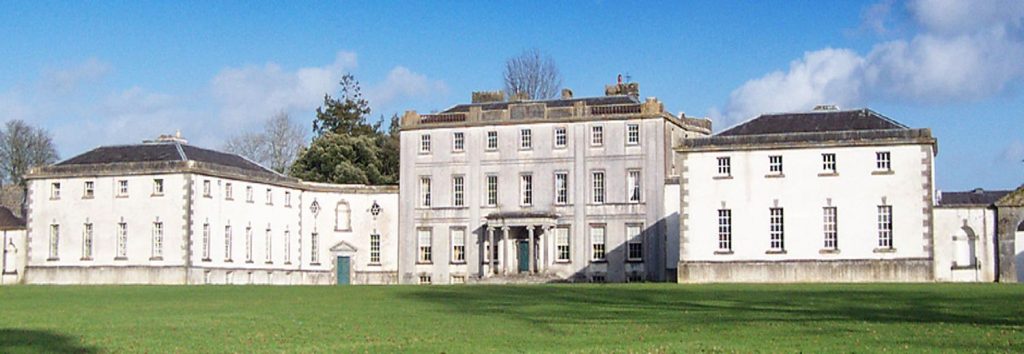
That contentious history has resulted in “the Big House” becoming a focal point of many novels that tell complex stories of life and love and offer critiques of the landlord system centered on an estate with a large, unmanageable house at its center, a site of inevitable individual, class, and cultural conflict. The tradition had its start in 1800, when Irish writer Maria Edgeworth broke new ground with her satirical Castle Rackrent, a novella critiquing the absentee landlord system that contributed to so many Irish manor houses going to ruin. Criticizing her own class, the Anglo-Irish Ascendancy, for its exploitation and neglect of its Irish estates, Edgeworth innovatively adopted the persona of a faithful servant to tell her story; Thady’s loyalty to the castle-owning family blinds him to the way they bring this ruin on themselves but sheds satiric light on the problem for the reader to appreciate. Considered the first regional novel, Castle Rackrent was praised by none other than Sir Walter Scott, a famed poet who was about to become a regional novelist himself.
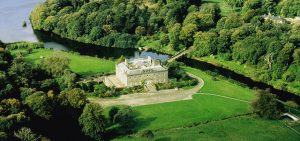
The Real Charlotte (1894), written by cousins and writing duo Edith Somerville and Martin Ross (aka Violet Martin), looks at these same problems and the fate of intelligent, aristocratic women trapped by social expectations in a story set in a mansion with a contested inheritance in southwestern County Kerry. My favorite Big House novel is Elizabeth Bowen’s The Last September (1929). Set during the War of Independence, also called the Anglo-Irish War, in 1920, this lyrical novel examines Ireland’s uncertain future—and that of the heroine Lois—as the colonial system begins to unravel. Bowen grew up in a Big House, Bowen Court (called Danielstown in the novel), and actually inherited it, but she eventually had to sell out, and the house was allowed to fall into ruin.

Of the four “big houses” on our itinerary—Muckross House, Westport House, Lissadell House, and Strokestown Park House—only Muckross seems to have a secure future. Set in a gorgeous landscape on a lake at the foot of McGillycuddy’s Reeks, Ireland’s highest mountains, Muckross House, where Queen Victoria once stayed, is now part of Killarney National Park and is maintained by the government. Westport House in the town of Westport, once the home of the famous “pirate queen” Grace O’Malley, has been in the hands of the same family for hundreds of years and was a model of how to operate a house and estate as a family business, until it was abruptly put up for sale last year. Lissadell House, the childhood home of the revolutionary Constance Gore-Booth Markiewicz and frequented by the young W. B. Yeats, is currently owned by a wealthy family, the Cassidy-Walshes, and has been lovingly restored, but as a private home faces future risks.
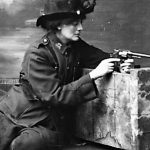
Strokestown Park House, with its connections to the Great Potato Famine of 1845-52, is owned by a somewhat eccentric local person whose idea of preserving the house is to leave it just as it was, decay, cobwebs, and all. We will also be visiting Coole Park, home of writer and literary patron Lady Augusta Gregory, but only to see the beautiful gardens and lake, as the house fell into ruin long ago: it was simply too expensive for anyone in post-independence Ireland to afford. These varying—and in the case of the last three—precarious circumstances are a good representation of the attitude towards such monuments following independence, though a greater sense of the houses’ significance is increasingly evident in Ireland today.
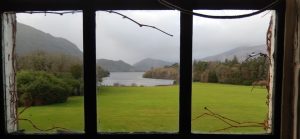
I think you’ll enjoy all four houses and their grounds and the grounds of Coole Park. I have my favorite spots in each of them. The views of the lawn, lake, and mountains from the Muckross House drawing room are spectacular, though I’m afraid the Victorians made much use of the heavy curtains they favored. As a hunting lodge, the house is decorated with taxidermied animals and antlers from the surrounding area.

Westport House is filled with art, furniture, and artifacts of historical importance, including a knitted cap left there by Alfred, Lord Tennyson when he visited the Browne family. There’s a portrait of a lady with wild curly hair that I am pretty sure was one of my ancestors. At Lissadell, you can see where its most famous denizen, the Easter Rising heroine Constance Gore-Booth Markievicz, etched her name on a window pane and gaze out the “great windows open to the south” overlooking Sligo Bay and the mountain where Queen Maeve is said to be buried, Knocknarea. In his poem “In Memory of Eva Gore-Booth and Con Markievicz,” Yeats wrote these lines about Constance and her sister Eva, whom he had a crush on.
The light of evening, Lissadell,
Great windows open to the south,
Two girls in silk kimonos, both
Beautiful, one a gazelle.

Strokestown Park House is a marvel of Georgian Palladian architecture. It has a fabulous kitchen with a gallery around the top from which the lady of the house could drop the menu down to the cook, so she didn’t have to dirty her gown or mingle with the servants. My husband, Ron Calabrese, is a neurobiologist who studies leeches, so we love this leech jar in the Strokestown kitchen. Leeches were once used for medicinal bloodletting and, interestingly, are still used today to increase circulation after microsurgery. On our trip in mid-June, we should be in time to see the beginning of the vegetable and flower gardens that stretch out behind this beautiful house.
Whenever I visit one of Ireland’s few Big Houses, I’m grateful that it is still open to the public, still offering a window on the life of the rich and the poor, still echoing with the hopes and dreams of ages past.
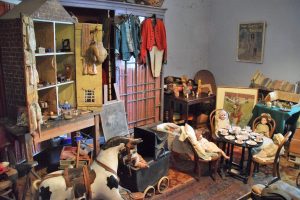

Christine,
Thanks for that very interesting information about the “Big Houses” with their fascinating past and uncertain future. I hadn’t realized how much more they are at risk than similar houses in other countries. I also look forward to checking out some of the books you mention.
Eleanor
Eleanor,
Another wonderful Big House story is “Woodbrook,” a memoir by David Thomson. That house is in private hands, but the story is very compelling and covers the time during which the Ascendancy began to fade from residence and influence in Ireland. I wrote about the book and my attempt to catch a glimpse of the house in my blog:
http://www.christinecozzens.com/ireland/51-woodbrook/
Thanks for commenting!
Christine